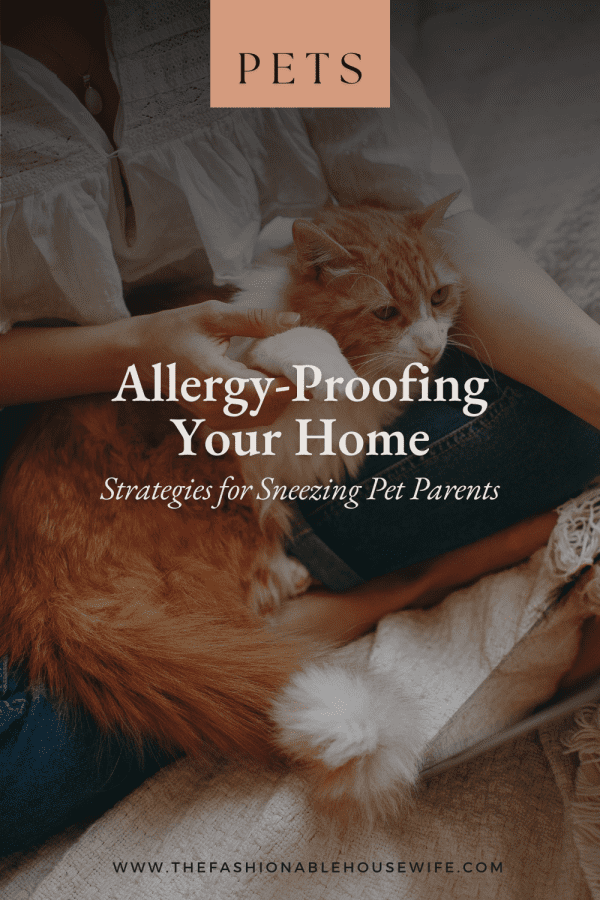Allergy-Proofing Your Home: Strategies for Sneezing Pet Parents

Welcoming a pet into the family brings joy, companionship, and plenty of playful antics. For many households, however, enjoying canine or feline company can come with unwelcome side effects: sneezing fits, itchy eyes, and persistent congestion. These reactions stem from pet allergens, microscopic proteins found in dander, saliva, and urine, which can circulate in your home long after playtime ends. The good news is that by understanding how these irritants spread and adopting cleaning, grooming, and air-quality measures, sneezing pet parents can reclaim a healthy, comfortable living environment without sacrificing precious bonding moments over pet allergies.
Understanding Pet Allergens and Their Impact
Pet allergies originate primarily from microscopic proteins found in dander, saliva, and urine. Unlike common dust particles, these proteins are incredibly lightweight and easily become airborne. They settle on furniture, bedding, and carpets. Everyday activities such as petting, brushing, or walking past a favorite dog bed stir these irritants back into the air, triggering nasal congestion, sneezing, and itchy eyes for sensitive individuals. Allergen levels often spike in homes lacking adequate ventilation or routine cleaning. Recognizing that pet-related proteins persist long after cuddle sessions finish empowers pet parents to reduce exposure and ease allergy symptoms throughout every room.
Creating Allergy-Resistant Zones
One of the most effective strategies for minimizing pet allergies is designating specific areas of the home as pet-free zones. Bedrooms are a prime candidate and they can offer a sanctuary for healthy, uninterrupted sleep. Hard-surface flooring or low-pile rugs can be cleaned easily and heavy drapery that traps dander should be avoided. Encase mattresses and pillows in allergen-barrier covers and keep doors closed to prevent dander migration. In living areas where pets are welcome, choose furniture with washable slipcovers and materials such as leather or tightly woven fabrics that trap fewer particles. Thoughtful planning of pet-friendly and allergen-restricted zones allows both two and four-legged family members to enjoy the home comfortably.
Cleaning Techniques That Reduce Dander
Consistent and thorough cleaning provides the backbone of any allergy-proofing plan. Invest in a vacuum cleaner equipped with a true HEPA filter to capture at least 99.97 percent of airborne particles. Aim to vacuum floors, rugs, and upholstered furniture at least twice a week. Microfiber cloths dampened with a gentle cleaning solution work best for dusting shelves, baseboards, and window sills because they trap dander rather than dispersing it. Do not overlook pet beds and washable blankets. Laundering on hot water cycles removes significant amounts of allergens. For deeper cleaning, arrange steam treatments for carpets and fabric furniture every few months. Removing allergens at their source will help maintain an environment that is more comfortable for everyone.
Grooming and Care Routines to Minimize Allergens
Incorporating regular grooming into your pet care routine significantly lowers the volume of dander in your home. Brushing your animal outdoors or in a well-ventilated area prevents loose fur from settling indoors. Bathing schedules vary by breed but aim for a monthly wash with a veterinarian-recommended shampoo to strip away excess allergens. Partnering with a professional, such as a Seattle dog groomer, provides access to specialized treatments like de-shedding and hypoallergenic baths. Trimming your pet’s nails and wiping their paws after outdoor walks helps prevent pollen and dirt from being tracked indoors. Consistent grooming not only supports your pet’s health but also keeps allergens at bay, ensuring a cleaner environment for the entire household.
Enhancing Air Quality with Filtration and Ventilation
Upgrading home ventilation and filtration systems provides continuous relief for allergy-prone households. Replace HVAC filters with high-efficiency options rated MERV 11 or higher in order to capture finer particles. Portable air purifiers with true HEPA filtration can be placed in bedrooms or main living areas to trap remaining allergens. Opening windows for short periods on mild days promotes fresh-air exchange when outdoor pollen counts are low. Installing exhaust fans in kitchens and bathrooms helps eliminate moisture and airborne contaminants. Finally, maintaining indoor humidity between thirty and fifty percent discourages dust mites and mold growth. Combining mechanical filtration with strategic ventilation allows everyone to breathe easier and enjoy cleaner air.
Conclusion
Bringing together these targeted strategies of zoning spaces, rigorous cleaning, regular grooming, and optimized air handling gives sneezing pet parents the tools they need to dramatically reduce pet allergies and triggers at home. With consistent application of these methods, you can transform your living space into a sanctuary of health and happiness for both you and your pet.

